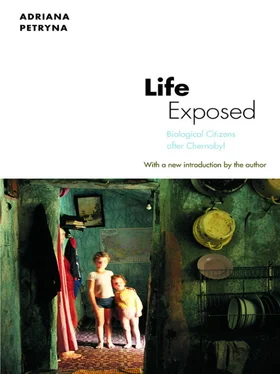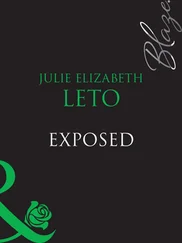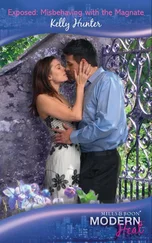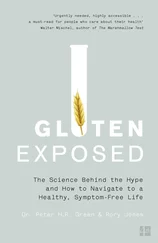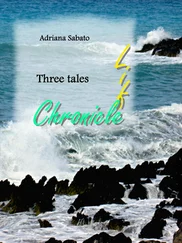By contrast, there is an almost breathless array of divergent (affirmative, negative, inconclusive) data on how plants, mammals, and amphibians negotiate the surprise of “abrupt fast changes on the environment” due to Chernobyl. Numerous studies of different species have been ongoing throughout the final decade of the twentieth century and the first decade of the twenty-first. As new data and new kinds of technologies have become available, findings focusing on the short- and long-term aspects of the disaster’s radiogenic impact in the Chernobyl dead zone have been published, debated, revised, and in one case even retracted. And the retraction was a point of pride: “It was an important lesson in admitting error and coming to terms with our mistakes,” according to the retracting authors. [19] Chesser and Baker 2006:546. Their 1996 study published in Nature found that voles living in the Chernobyl zone had a higher rate of genetic mutation. Upon resequencing genes using an automated gene sequencer, they found they could not replicate the initial result.
In studies of changing terrestrial ecosystems post-Chernobyl, evidence accumulates through repeated observation; it contains a structure of accumulation and apparent self-correction. In this world, science yields different answers depending on how you shake the data, and for how long .
Some studies of biological effects in plants and animals do not conclusively point to reduced “survival fitness,” while other longer-term studies strongly do. [20] See Baker and Wickliffe (2011) on the Chernobyl “wildlife” thesis and compare with the findings of Mousseau and Møller (2011).
Indeed, Hiroshima and Nagasaki human lifetime cohort studies suggest that some effects are delayed in their onset for up to several decades following the exposure. This is not to say that there are one-to-one comparisons between species or different nuclear events. But these studies provide plenty of reason to resist closing the book on Chernobyl prematurely.
Two years after the catastrophe at the Fukushima Daichii nuclear plant in Japan, citizens worldwide require a reliable measure of the human consequences of chronic exposure to low-dose radiation from nuclear accidents. Chernobyl could have provided that measure. But it has not. Finnish radiation specialist Keith Baverstock led the WHO’s radiation protection program from 1991 to 2003; he noted in 2011, “There have not been any serious and large enough studies done on the appearance of solid tumors, like breast cancer, gastric cancer or lung cancer.” There is no long-term plan of research. [21] Cited from interview with Keith Baverstock, longtime head of the Department for Radiation and Health of WHO, http://www.ippnw-students.org/chernobyl/baverstock.html .
Absent lifetime studies—of the kind to which we have subjected Holstein cattle, voles, and mice—we still don’t know how those exposed at Chernobyl survived. This path in science leaves the public ill-equipped to handle current and future disasters.
Being accountable to the people affected is a key challenge of our time. The workers and evacuees who appeared in the clinics and administrative offices where I did fieldwork do not constitute clear-cut and well-defined cohorts now. They are not pure samples in any sense. But this fact alone does not justify their exclusion from robust scientific inquiry. It is critical to recognize that these claimants showed up because of unanswered health questions. Those unanswered questions are symptoms of a fraught politics of science and a state that made their bearers’ complaints idiosyncratic and unreal. Yet the reality of the claimants’ health burdens should not be ignored in analyses of the disaster’s effects, including those that address how they survived. Biomedical truths are complex, but they must be understood in all their complexity if we are to lay the groundwork for a better response in the future.
The Unlikely Happened Again: Some Comparative Notes for the Present and Future
In 2011, the Bulletin of the Atomic Scientists , a journal covering global security and public policy issues, invited a group of Chernobyl experts to write essays for a themed issue dedicated to the disaster’s twenty-fifth anniversary. Mikhail Gorbachev wrote the lead essay. The head of an influential former U.S.-Soviet medical team coauthored an article entitled “If the Unlikely Becomes Likely: Medical Response to Nuclear Accidents.” In it, the authors expressed confidence in the nuclear industry’s “extensive guidelines for dealing with these incidents that work reasonably well” to prevent runaway disasters. [22] See Gale and Baranov 2011:17.
Chernobyl, they wrote, was unlikely and unmanageable not because of its scale, but because of the incompetence of the plant’s operators, who could not properly adhere to guidelines. Such reasoning reinforces the narrative of Chernobyl as unique, a one-off event with no comparability with other disasters.
Precisely on the twenty-fifth anniversary of Chernobyl, “the unlikely” happened again. Reactors at the Fukushima Daichii plant exploded, exposing the serious lapses that blind overconfidence in guidelines conceals. Today, a theater of moral calculus is staging itself not behind an iron curtain, but before our very eyes.
At first, various experts and observers went to great lengths to refrain from making comparisons between Chernobyl and the nuclear disaster at the Fukushima plant. Chernobyl was arguably history’s worst peacetime nuclear disaster; the reactor was of poor Soviet quality and design; the nuclear explosion and meltdown were unparalleled; and the aftermath was mishandled by a corrupt government that tried to cover up the disaster’s scope. The stricken Fukushima plant, it was stated repeatedly, was better designed, and the catastrophe would be dealt with in a “Japanese” way—as embodied in the brave Fukushima 50, also called a “suicide corps” for their utter devotion to the task of containing radiation at all costs. Many of these workers’ lives have been devastated by the triple catastrophes of March 2011, their villages swept away and loved ones gone.
While a proper comparison with Fukushima may prove a limited endeavor at present, I hope that Life Exposed provides a critical template for moral inquiry into Fukushima and into the choices that policymakers and citizens are facing today. And if this book sheds any comparative light, the comparison illuminates how limits of accountability can be built into interventions themselves, confounding truths about the health consequences of widespread radiation release. The brave fifty of Fukushima were called upon to do superhuman tasks, and they toiled in relative obscurity, clearing rubble and debris. As they attempted to cool the reactors and fuel pools and to avert meltdown, they reportedly saw the same ethereal blue flashes, symptomatic of the meltdown of nuclear fuel and uncontrolled chain reactions, that were witnessed by the many Chernobyl cleanup workers I interviewed for this book. Today, new cohorts of fifty toil feverishly—removing highly radioactive roof concrete and ducts, shielding floors and windows, sticking lead boards onto inside walls—as they work to shift areas of the plant from highly contaminated to less contaminated status. And this is all just in aid of creating a safe working environment for the decommissioning of the plant, itself a separate long process.
The Fukushima 50 have reportedly been kept largely isolated from the rest of the population, under a government medical surveillance system that is separate from the system used for evacuees and people living in the vicinity of the plant. As authorities invoke their heroism, these anonymous fifty are being swapped out for another fifty, and so on and so on—so much so that, by last count, their numbers have grown to roughly eighteen thousand: “Most of them are not employed by TEPCO [Tokyo Electric Power Company], but by subcontractors, who in turn recruit their workers from temporary employment agencies. Before the tsunami, many of these temporary workers had already done their fair share of the dirty work at other nuclear power plants.” [23] Meyer 2011. The 18,000 figure is as of October 31, 2011. See Wada et al. 2012. For critical insights on the fate of the Fukushima workers, see Jobin 2012.
Concerns have been voiced that there are not enough people to carry out the mission of cleaning up and stabilizing the situation. Meanwhile, Japan’s Health and Labor Ministry has continued to focus on containment of contamination, leading officials to increase threshold doses in an attempt to shore up the numbers of eligible laborers. It twice raised the legal limit on the amount of radiation to which each worker could be exposed—up to five times the maximum exposure permitted for American nuclear workers—so that workers could toil longer at the plant.
Читать дальше
